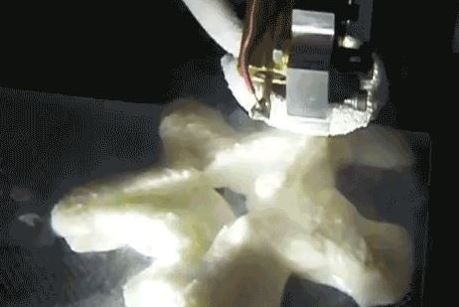MIT’s Next Gen Ice-Cream Machine – Want a 3-D printed Ice-Cream..??
An awesome threesome MIT students have combined 3-D printing technology with an ordinary Cuisinart Soft Serve Ice Cream maker and made 3-D printed ice-cream. The students–Kyle Hounsell, Kristine Bunker and David Donghyun Kim–invented the device as a part of a class project in Additive Manufacturing course.
The modified printer uses the concept of laying down successive layers of liquid cream on to a plate which is super cooled using liquid nitrogen, so that the cream solidifies immediately after coming in contact with the plate and hence it can retain any desired shape.
In order to efficiently execute this concept the students used a small freezer which was large enough to accommodate a Solidoodle 3-D printer along with a small tank for liquid Nitrogen and also allowing for certain amount of build volume.
Also, to maintain a constant composition of the ice-cream the cryogen line which carries nitrogen to be blasted on to the cream, was bent into a circular shape that goes around the extruder so that it evenly sprays the gas around the cream.
Many other foods and dishes have already been printed using 3-D printing technique fruits, pizza, sweets, etc and now to complete a 3-course meal we have a dessert, a 3-D printed ice-cream.
A potential substitute of an ice-cream machine, this device is definitely a masterpiece as it has the capability to make ice-cream of any shape and attract a lot of people in the future. The vision that inspired the team behind this modified printer was to encourage children to pursue a future in the field of Science & Technology. As explained by the team members “This is a novel process that we hope will get kids excited about the potential of the technology. We imagine this technology being marketable in ice cream parlors such as Dairy Queen where customers can order an ice cream treat, wait 15 minutes, and see the shape they chose be created. Of course last, and more importantly, we aim to enjoy the ice cream after successful printing!”.
3-D printing has turned a lot of heads in a very short span of time, with a very wide range of applications may it be in printing low-cost components for certain machines or even things made from scratch using nothing but biopolymers. 3-D printing has the potential to mould our future and the manufacturing industry but we can never say with exact precision what the future and we must beware of what we wish for.

